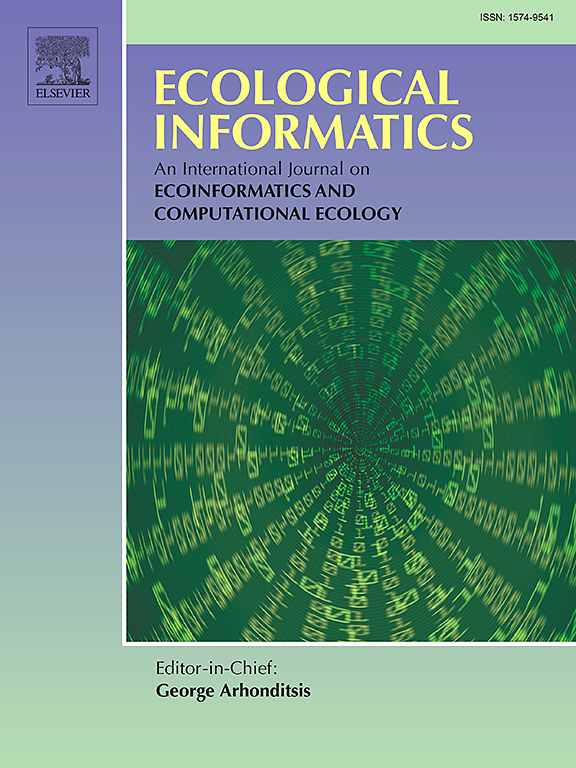用于评估康涅狄格州城镇莱姆病和景观破碎化动态的时空加权回归(STWR)
IF 5.8
2区 环境科学与生态学
Q1 ECOLOGY
引用次数: 0
摘要
了解在不同时期和地区增加莱姆病(LD)风险的景观决定因素,对于评估疾病易感性以及制定精确的干预和预防策略至关重要。这项研究引入了一个新颖的数据驱动框架,从大量潜在变量中识别出潜在指标。然后,我们采用先进的时空加权回归(STWR)模型,研究康涅狄格州城镇的景观破碎度指标与 LD 发病率的时空变化之间的相关性。我们提出了一个数据驱动的过滤框架,从庞大的数据池中挑选出五个变量。分析结果表明,LD发病率对景观破碎度的比例或指数变化表现出更高的敏感性;景观指标的对数和平方变换揭示了较小的影响,并为潜在的抛物线关系提供了场所。观测结果还揭示了重要的空间趋势,显示在拥有广阔、不间断落叶林的地区,LD发病率升高,同时湿地生态系统相关变量也对疾病发生率的上升做出了贡献。与地理加权回归(GWR)相比,STWR 模型证明更有效、更可靠,具有更高的 R2 和更低的估计标准误差(SE)。STWR 模型在数据的时空变化方面具有很高的灵活性。STWR 结果进一步反向显示了疾病预防中心(CDC)在 2008 年对 LD 病例分类所做的改变。本研究将数据驱动和模型驱动方法相结合,提供了一个将经验模式检测与理论洞察相结合的稳健框架,提高了生态学研究的稳健性和预测能力。本文章由计算机程序翻译,如有差异,请以英文原文为准。
Spatiotemporally weighted regression (STWR) for assessing Lyme disease and landscape fragmentation dynamics in Connecticut towns
Understanding the landscape determinants that escalate Lyme disease (LD) risk through various times and regions is vital for appraising disease susceptibility and shaping precise intervention and prevention strategies. This research introduces a novel data-driven framework to identify potential indicators from an extensive array of potential variables. We then deployed an advanced spatiotemporal weighted regression (STWR) model to investigate how landscape fragmentation metrics correlate with the spatiotemporal variability of LD incidence rate in Connecticut towns. We proposed a data-driven filtering framework to select five variables from a large data pool. The analysis unveils that LD incidence rates exhibit heightened sensitivity to proportional or exponential shifts in landscape fragmentation; logarithmic and squared transformations of landscape metrics shed light on lesser effects and venue for potential parabolic relationships. Observations also disclose significant spatial trends, showing elevated LD incidence rates in locales with vast, uninterrupted deciduous forests, alongside contributions from wetland ecosystem-related variables to the rise in disease occurrence. Compared with Geographically Weighted Regression (GWR), the STWR model proved more potent and reliable with higher R2 and lower estimated standard errors (SE). The STWR model is highly flexible in terms of spatiotemporal variations in data. The STWR results further reversely indicate the changes made by the Center for Disease and Prevention (CDC) in the case classification of LD in 2008. The integration of data-driven and model-driven approaches in this study delivers a robust framework that combines empirical pattern detection with theoretical insight, enhancing the robustness and predictive power of ecological studies.
求助全文
通过发布文献求助,成功后即可免费获取论文全文。
去求助
来源期刊

Ecological Informatics
环境科学-生态学
CiteScore
8.30
自引率
11.80%
发文量
346
审稿时长
46 days
期刊介绍:
The journal Ecological Informatics is devoted to the publication of high quality, peer-reviewed articles on all aspects of computational ecology, data science and biogeography. The scope of the journal takes into account the data-intensive nature of ecology, the growing capacity of information technology to access, harness and leverage complex data as well as the critical need for informing sustainable management in view of global environmental and climate change.
The nature of the journal is interdisciplinary at the crossover between ecology and informatics. It focuses on novel concepts and techniques for image- and genome-based monitoring and interpretation, sensor- and multimedia-based data acquisition, internet-based data archiving and sharing, data assimilation, modelling and prediction of ecological data.
 求助内容:
求助内容: 应助结果提醒方式:
应助结果提醒方式:


